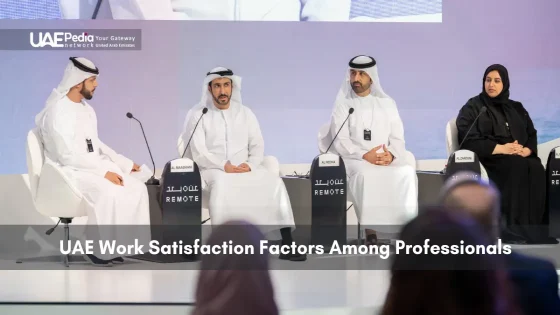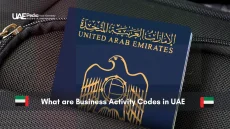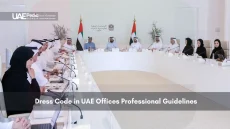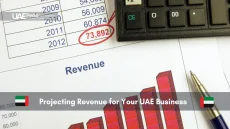What if preparing for labor checks wasn’t about fear, but about building trust? The UAE’s approach to health and safety isn’t just red tape—it’s a shared journey toward creating spaces where employees thrive. Since the enactment of Federal Decree-Law No. 33 of 2021, and its subsequent amendment by Federal Decree-Law No. 9 of 2024, labor rights in the UAE have undergone significant transformation, companies now balance innovation with cultural respect, much like a well-planned majlis gathering.
Inspectors don’t just scan paperwork—they look for commitment. Think of it as a wadi trek: you need the right gear (accurate records), a reliable guide (clear protocols), and teamwork (employee interviews). Surprise visits? They’re opportunities to showcase your company’s dedication to holiday pay rules and other entitlements, not just avoid fines.
Here’s the heart of it:
- Recent regulations emphasize occupational health and safety, integrating international standards with Emirati cultural values.
- Cooperation during evaluations matters as much as your emergency exit signs.
- Transparency builds credibility—whether you’re updating payroll systems or training staff.
Understanding Working Conditions Inspections in the UAE
Imagine labor checks as a compass guiding workplaces toward fairness—not just ticking boxes. These evaluations exist to protect workers’ rights while balancing safety standards with operational efficiency. Think of them as a collaborative roadmap, where transparency meets accountability.
Purpose and Scope of Labor Inspections in the UAE
Inspections focus on three pillars: health safety protocols, fair labor practices, and accurate record-keeping. They verify everything from emergency exits to payroll systems—like a chef ensuring every ingredient meets quality standards. Common focus areas include:
| Area Checked | Purpose | Example |
|---|---|---|
| Safety Equipment | Prevent workplace accidents | Fire extinguisher accessibility |
| Employee Contracts | Ensure legal compliance | Overtime pay clauses |
| Work Environment | Promote well-being | Ventilation systems |
Employers must ensure that wage payments are processed through the Wages Protection System (WPS), as non-compliance can lead to penalties and affect the company’s ability to obtain work permits. Ref.: “Ministry of Human Resources & Emiratisation. (2022). Administrative Decision No. (27) of 2022 Concerning Labor Inspection Procedures Manual. MOHRE.” [!]
Roles of Regulatory Authorities and Labor Inspectors
Inspectors act as navigators, not adversaries. They’re trained to review documents confidentially, interview staff respectfully, and identify risks proactively. One Ministry official notes: “Our goal isn’t to catch mistakes—it’s to help businesses build trust through compliance.”
Pro tip? Keep digital and physical records organized like a well-stocked spice rack. Surprise visits become stress-free when you can quickly share vaccination logs or training certificates. Remember, cooperation speeds up the process—and often earns goodwill.
Overview of UAE Labor Law and Recent Amendments
Picture this: a workplace where updated labor laws act like desert GPS—keeping everyone on course without stifling progress. Federal Law No. 33 of 2021 rewrote the playbook, blending health safety priorities with fresh worker protections. Think of it as upgrading from flip phones to smartphones—same core purpose, smarter tools for modern needs.
Federal Law No. 33 of 2021 and Its Implications
This law isn’t just paperwork—it’s a cultural shift. For the first time, fathers get 5 days of paid paternity leave, probation periods cap at six months, and discrimination based on race or disability? Officially banned. One HR manager in Dubai put it best: “These changes feel like adding seatbelts to our daily commute—uncomfortable at first, but soon indispensable.”
Key upgrades include:
- Annual leave entitlements have been clarified, ensuring employees with over five years of service receive a minimum of 30 days, in line with the updated labor law.
- Enhanced occupational health regulations have been implemented, particularly for high-heat industries, including the enforcement of the Midday Work Ban from June 15 to September 15 annually.
- Flexible work arrangements, including part-time, temporary, and remote work, have been formalized to accommodate diverse employment needs.
Recent Amendments and Compliance Requirements
Businesses now juggle two priorities: meeting safety standards and adapting contracts. Construction firms, for example, must provide cooling gear during summer afternoons—a nod to both employee rights and practicality. Retailers? They’re updating handbooks to clarify grievance procedures.
Three smart moves for alignment:
- Digitize payroll systems to track overtime automatically
- Train managers on updated labor laws using bite-sized workshops
- Implement quarterly hazard assessments, akin to routine fire drills, to proactively identify and mitigate workplace risks.
Remember, inspectors aren’t just checking boxes—they’re gauging your commitment to progress. As one government advisor noted: “Compliance today is less about avoiding fines and more about building reputational armor.”
Federal Decree-Law No. 9 of 2024 extended the statute of limitations for labor claims from one to two years, providing employees and employers with a longer period to address disputes. Ref.: “Simmons & Simmons. (2024). Key Amendments to the UAE Labour Law: Federal Decree-Law No. 9 of 2024. Simmons & Simmons.” [!]
Preparing for Labor Inspections: Essential Steps for UAE Employers
What if your next inspection became a showcase of your team’s strengths? Start by treating compliance like a desert caravan—pack smart, know the route, and keep everyone hydrated with clear roles. Proactive preparation turns regulatory checks into opportunities to highlight your commitment to employee well-being and operational excellence.
“read more: UAE Work Technology Governance Framework and Compliance“
Conducting Self-Audits and Organizing Documentation
Begin with a “compliance treasure hunt”—gather employment contracts, payroll records, and safety certifications. Digitalize everything, but keep physical backups like a chef’s mise en place. One Dubai logistics manager shared: “Our color-coded binders saved hours during last month’s review—inspectors appreciated the clarity.”
Three audit priorities:
- Align contracts with current labor laws, especially probation limits and leave policies
- Update hazard logs quarterly—think heat stress plans for outdoor teams
- Store emergency drill reports where you’d keep spare keys—easy to grab
RESOURCE REQUIREMENT:
Companies are required to maintain both digital and physical records of employment contracts, payroll, and safety training certifications, ensuring they are readily available during inspections. Ref.: “Ministry of Human Resources & Emiratisation. (2022). Administrative Decision No. (27) of 2022 Concerning Labor Inspection Procedures Manual. MOHRE.” [!]
Educating Teams and Designating an Inspection Point Person
Turn staff into compliance allies through bite-sized training. Use role-playing scenarios during coffee breaks—“What if an inspector asks about your break schedule?” Designate a bilingual point person who knows your operations like their morning commute. They’ll streamline queries and showcase your transparency.
Pro tips for smoother visits:
- Schedule mock inspections—treat them like fire drills with feedback sessions
- Create a 5-minute “cheat sheet” for receptionists and team leads
- Celebrate compliance wins—even small fixes deserve recognition
Remember: Preparation isn’t about perfection. It’s showing inspectors your safety standards evolve alongside regulations—like updating a family recipe with modern techniques while preserving its soul.
Navigating Labor Inspection Procedures and On-Site Best Practices
Ever hosted a surprise guest who checks your home’s wiring and asks about your family’s well-being? That’s inspection day—a chance to demonstrate your commitment to safety standards while keeping operations smooth. Here’s how to turn regulatory visits into relationship-building moments.
“read also: UAE Workplace Technology Trends Reshaping Offices“
What to Expect During the Inspection Process
Inspectors arrive like skilled detectives—polite but thorough. They’ll present official IDs, then start with a facility walkthrough. Think of it as a three-step dance: review (documents), observe (work areas), and engage (staff interviews).
Construction teams should prep rest zones with shaded seating and water stations. One project manager shared: “Our cooling trailers became the inspectors’ first stop—proof we prioritize worker comfort during summer peaks.”
Failure to adhere to the Midday Work Ban, which prohibits outdoor work between 12:30 PM and 3:00 PM from June 15 to September 15, can result in fines up to AED 50,000 for multiple breaches. Ref.: “Gulf News. (2025). UAE midday work ban: Dates and timings for this summer from MoHRE. Gulf News.” [!]
Managing Interviews, Record Reviews, and On-Site Corrections
Stay calm if asked for last year’s payroll logs or emergency drill reports. Designate a “compliance captain” to fetch records swiftly. During staff chats, inspectors might ask:
- “How often do you receive safety training?”
- “Can you show me where protective gear is stored?”
If adjustments are needed—say, relocating fire extinguishers—document each change like a recipe tweak. Snap “before and after” photos for your files. Cooperation here builds trust faster than falcon in a dive.
Pro tip for builders: Keep hardhats and first-aid kits visible near high-traffic zones. Inspectors notice these details like chefs spot fresh herbs—it shows your team’s daily dedication to hazard prevention.
“read more: Employment Visa UAE Processing Time and Cost
Sustaining Compliance and Enhancing Workplace Safety in the UAE
Think of workplace safety as a living blueprint—it evolves with every lesson learned and improvement made. Staying aligned with labor laws isn’t just about passing checks; it’s about crafting spaces where teams innovate confidently, like a desert caravan adapting to shifting sands while keeping treasures intact.
Three compass points for lasting success:
- Treat health safety reviews as quarterly tune-ups—update protocols, refresh training, and celebrate progress
- Empower employees to report hazards like seasoned guides spotting storm signs
- Build relationships with inspectors—they’re partners in refining your operational roadmap
Read More:
The Ministry’s recent initiatives, such as mandatory cooling breaks during peak heat hours and upgraded protective gear requirements, demonstrate how regulations drive innovation in workplace safety. Your commitment to these standards becomes part of the Emirates’ story: workplaces where respect and resilience thrive.
Embracing compliance as an opportunity rather than an obligation can lead to enhanced workplace culture and operational excellence. Start today by reviewing emergency equipment placements and hosting a 15-minute safety huddle. When regulations and care walk hand-in-hand, every worksite becomes a testament to what’s possible.
The law prioritizes occupational health and safety like never before—think mandatory risk assessments, clearer rules on rest periods, and stricter penalties for employers who ignore ergonomic standards. It also expands protections for remote workers and those in high-heat environments.
Aim for quarterly checks, especially in sectors like construction or logistics. Monthly reviews of equipment logs and incident reports help spot trends. Before an official inspection? Do a mock audit using the Ministry of Human Resources and Emiratisation’s checklist—it’s like a dress rehearsal for compliance.
Yes—if there’s an imminent danger like exposed wiring or faulty scaffolding. For less urgent issues, they’ll issue correction notices with deadlines. Pro tip: Fix minor problems on the spot if possible. It shows goodwill and might avoid fines.
Keep these five handy: signed employment contracts, attendance records proving rest days, training certificates (especially for forklift operators or crane handlers), maintenance logs for machinery, and your hazard reporting system. Digital copies? Even better—inspectors appreciate organized teams.
Absolutely. Dormitory inspections now check occupancy limits, ventilation, and COVID-19 protocols. Shared kitchens must have fire extinguishers, and bedding replacements are required yearly. Some emirates even mandate recreational spaces—think ping-pong tables or prayer rooms.
Incomplete PPE (personal protective equipment) compliance tops the list—workers wearing hard hats but no safety shoes, or masks that aren’t NIOSH-certified. Second place? Overtime pay miscalculations. Use payroll software that auto-tracks hours against legal limits to avoid this.
The Ministry’s Tas’heel app allows confidential reports with photo evidence. Employers must display hotline posters in break rooms—usually in Arabic, English, and Urdu. Retaliation against whistleblowers? Straight-up illegal and punishable by fines up to AED 1 million.



















